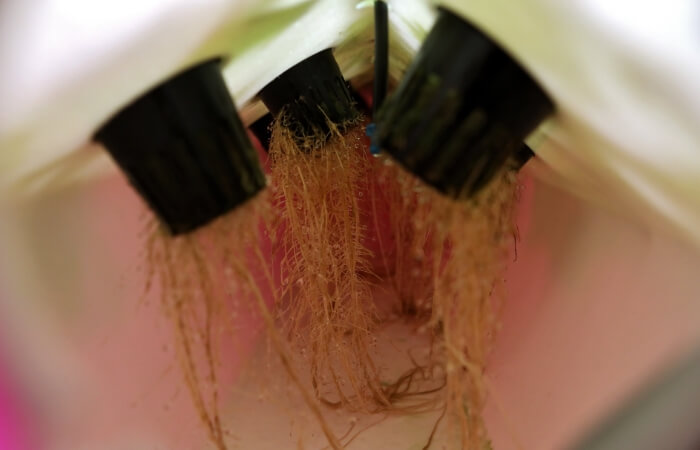This guide is your friendly neighbor over the fence, here to help you take those first steps into gardening. Whether you’re dreaming of juicy tomatoes, vibrant flowers, or a patch of green herbs, I’ve got you covered.
I’ll walk you through choosing the perfect spot, prepping your soil, picking plants that will thrive, and much more. You’ll see, it’s easier than you think!

Choosing The Right Location
Before you get started digging around, you’ll need to pick a location that sets the stage for your garden’s success. It’s the difference between a flourishing oasis and a plant ghost town.
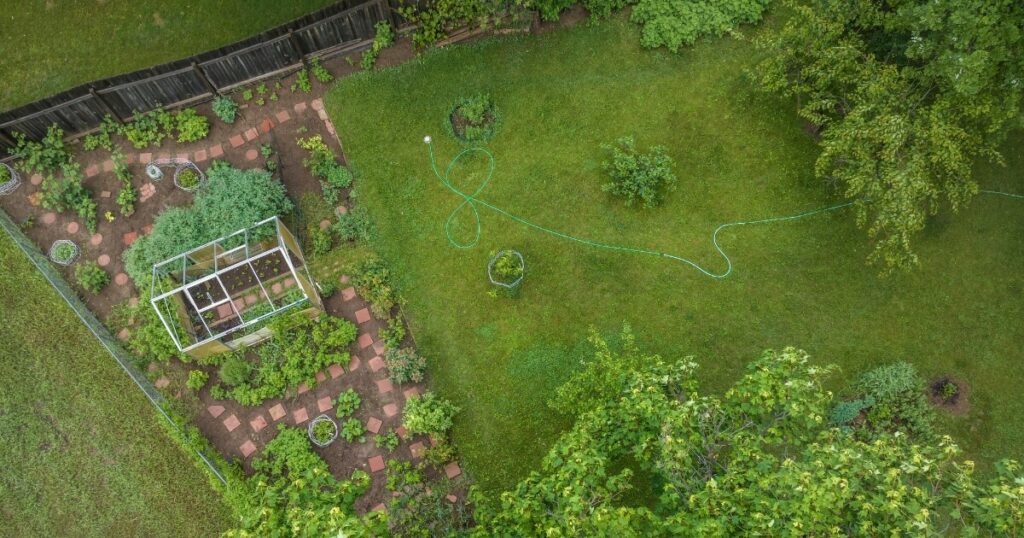
Here’s how to find that sweet spot:
- Sunshine: Most veggies will need 6 to 8 hours of direct sunlight daily. So, watch your yard’s sun patterns to find a sunny spot and away from tall trees that may cast large shadows.
- Soil Drainage: Think of your plant’s roots needing a comfy bed that is not too soggy or dry. If your soil feels more like a swamp, you might be better off with a raised garden bed.
- Sheltered: Your plants need protection, so the spot you pick shouldn’t be a wind tunnel and should be away from busy footpaths.
- Nutrient-Rich Soil: Plants gotta eat, and nutrient-rich soil is their favorite dish. Think of it as prepping a feast for your green guests. They’ll thrive with the right nutrients. We can always add fertilizers, but it’s best to start with good fertile ground.
Planning Your Garden Size
Gardening is exciting, and it’s easy to get carried away. A well-planned, manageable garden will bring you joy and peace and not overwhelming feelings of regret.
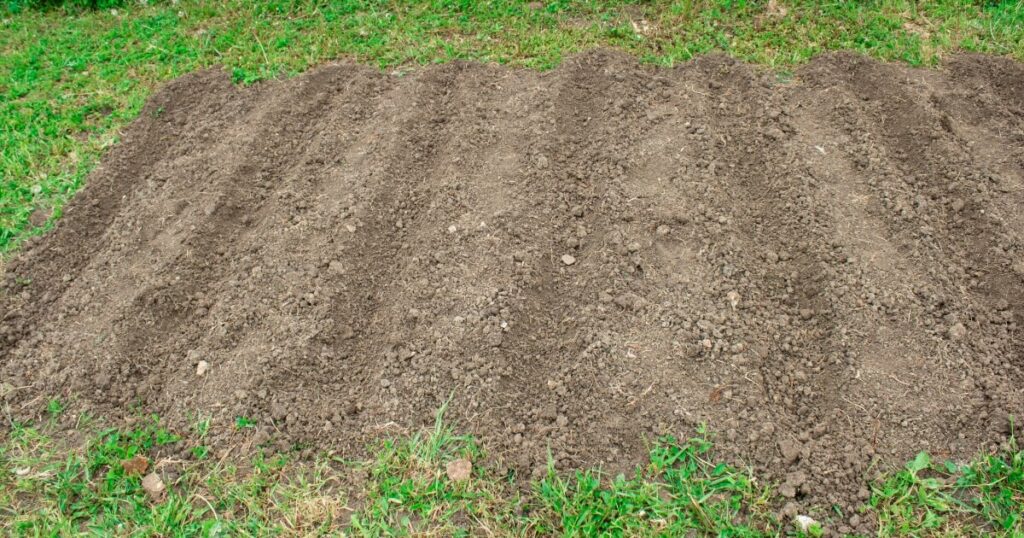
Here’s how to figure out the right size for a new garden:
- Think Manageable: It’s tempting to dream big, but a smaller garden is easier to love and care for. It’s like starting with a potted plant before adopting a forest.
- Your Garden, Your Choice: Ground planting, raised beds, and container gardens all have their advantages. But consider your available space. Do you have a big yard or a cozy balcony? Match your garden to your living space, and don’t forget your budget.
- Size It Right: Measure your available space. Imagine a garden that fits well, leaving room for you to move around. Think about the time you can dedicate too. A smaller garden won’t feel like a second job!
Selecting Vegetables To Grow
Choosing the right vegetables can make your gardening experience more enjoyable and fruitful.
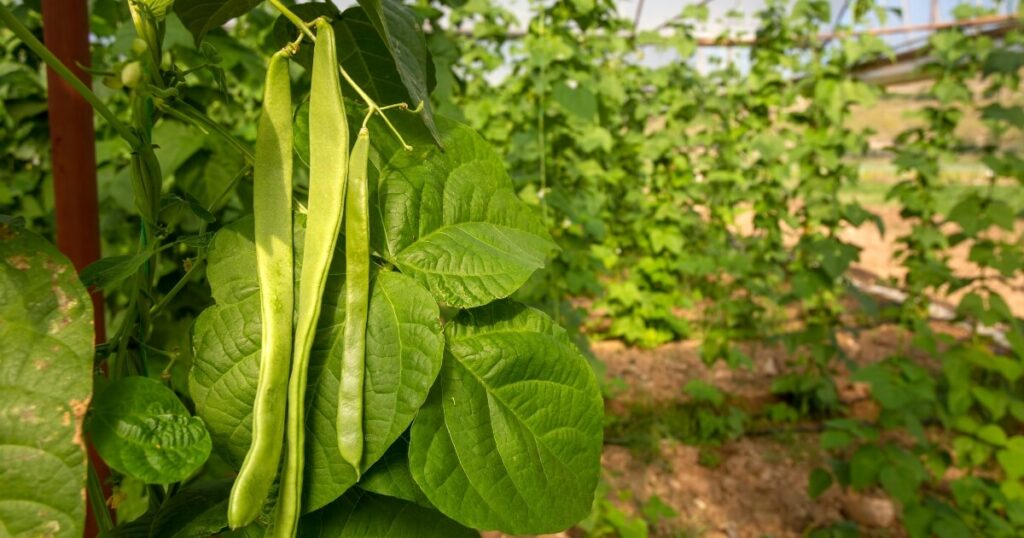
Here are some ideas to keep in mind:
- Start with the Easy Ones: Certain vegetables are known for being beginner-friendly. Lettuce, tomatoes, and green beans are great starters. They’re less fussy and give quick rewards.
- Family Favorites: Think about what you and your family enjoy eating. There’s nothing more satisfying than harvesting and eating your own produce. If no one likes Brussels sprouts, they might not be the best choice for your garden.
- Local Climate and Soil: Your local weather and soil type plays a big role. Some veggies thrive in cooler temperatures, while others love the heat. Check with local gardening resources or extension services to find out what grows best in your area. The USDA Plant Hardiness Zone Map is a great place to find which zone you live in.
Soil Preparation
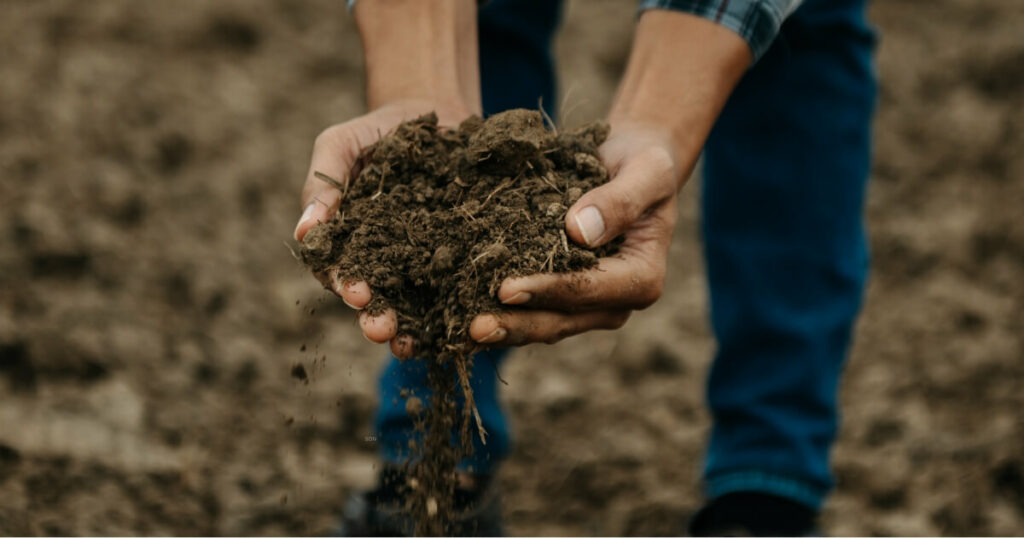
You should already have an idea of what type of soil your yard has, but let’s spend a little more time to make sure that it’s ready for a thriving garden before you start planting:
- Know Your Soil Type: Is your soil heavy like clay or light like sand? Squeeze a handful of moist soil. If it forms a tight ball, it’s clay. If it falls apart easily, it’s sandy. The goal is to reach a happy medium.
- Enrich with Organic Matter: Organic matter, like compost or aged manure, improves soil structure, adds nutrients, and enhances moisture retention. It’s like giving your soil a health-boosting smoothie.
- Amending Different Soils: Mix in organic matter to improve drainage and aeration for clay soils. Sandy soils benefit from organic matter, too, as it helps retain water and nutrients. Regularly adding organic matter is key to maintaining fertile, healthy soil.
Planting Techniques
Planting your garden is more than just putting seeds in the ground.
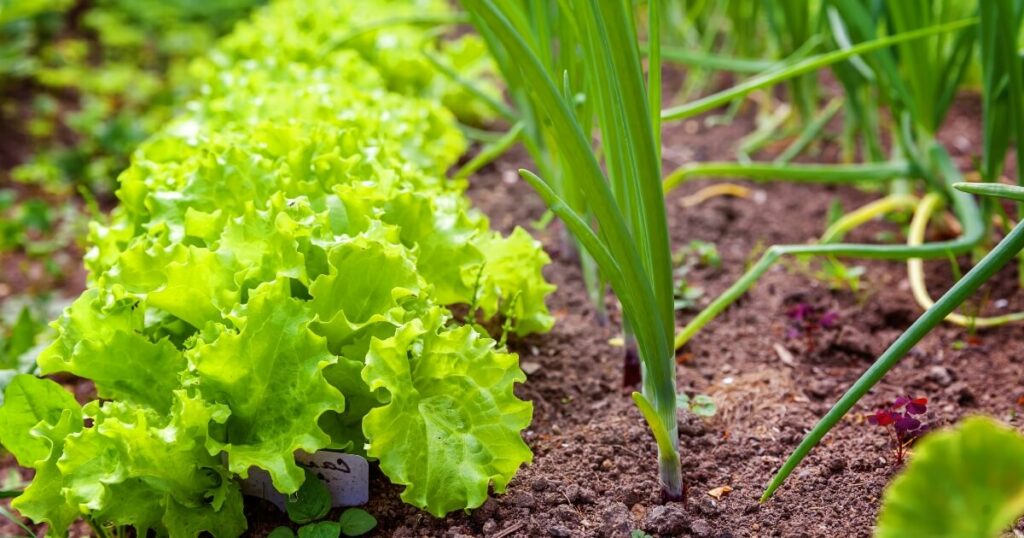
Here’s how to do it right:
- Cool-Season vs. Warm-Season: Cool-season vegetables (like lettuce and peas) thrive in the cooler parts of the growing season, early spring or late summer. Warm-season veggies (like tomatoes and peppers) need warmer temperatures and should be planted after the last frost.
- Spacing and Arranging: Each vegetable has its space needs. Overcrowding will lead to poor growth and disease. Follow the spacing guidelines on seed packets or plant tags. Also, remember to place taller plants where they won’t shade smaller ones.
- Planting Seeds and Transplanting Seedlings: Some vegetables do best when sown directly into the garden (like carrots and beans), while others prefer to start as seedlings and then be transplanted (like tomatoes). When transplanting, handle the seedlings gently and water them well after planting which will help to settle the soil around the roots.
Watering & Irrigation
Remember, too much or too little water can both be harmful. It’s about finding that balance. And there are a lot of tools you can buy to help with the watering, but they can be quite expensive.
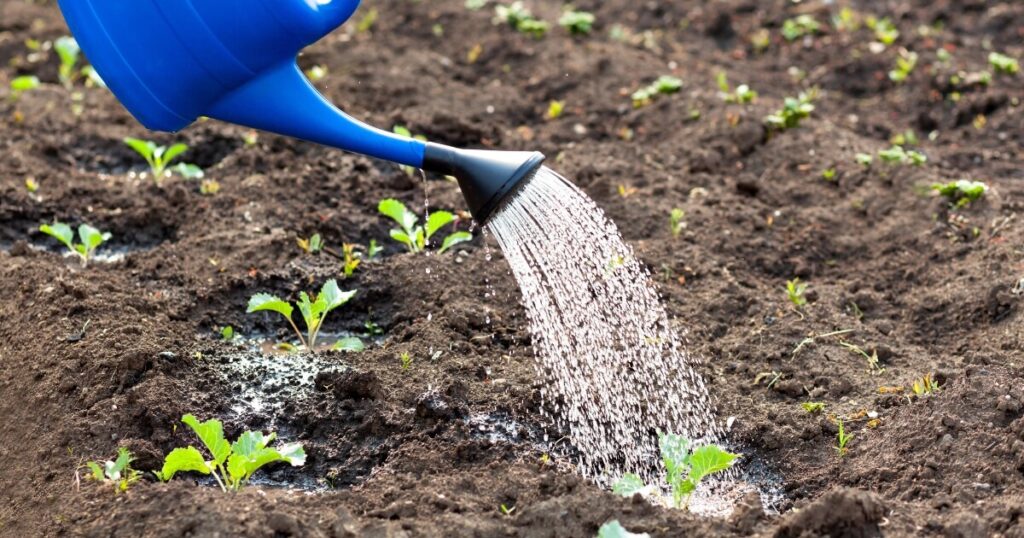
I suggest you take time to water your garden by hand and use a cheap sprinkler before trying to automate watering.
- Consistent Watering: Regular and even watering helps plants grow strong and healthy. Inconsistent watering can lead to problems like poor root development and stress on your plants.
- Watering at Different Stages: Seedlings and young plants need frequent, lighter watering. As plants mature, they benefit from less frequent but deeper watering, which supports stronger root growth. Always check the soil moisture at the root level to gauge if watering is needed.
- Watering Techniques and Systems: Options range from hand watering with a hose to automated irrigation systems like drip irrigation or soaker hoses. The key is to water deeply and directly at the soil level, which encourages deeper root growth and efficient water use.
Fertilization
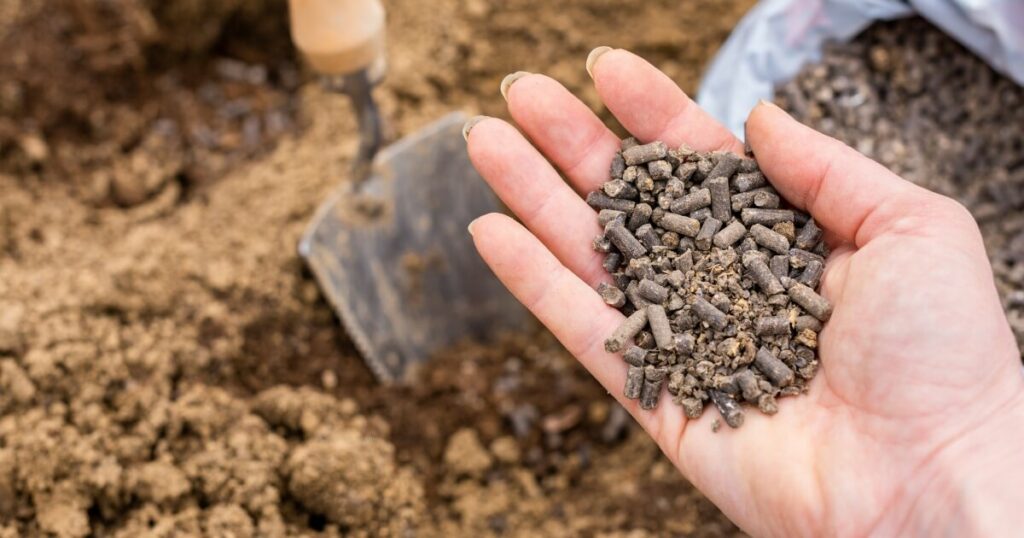
Balanced fertilization is essential for your garden’s success and healthy, productive plants:
- Nutrients and Plant Growth: Plants need a variety of nutrients for growth, with nitrogen, phosphorus, and potassium being the most important numbers you’ll need to know. Think of fertilizers as supplements that help meet these nutritional needs.
- Choosing and Applying Fertilizers: Select a fertilizer based on your soil’s nutrient requirements, which a soil test can determine. Apply fertilizers according to the package instructions to avoid over-fertilization, which can harm your plants.
- Organic vs. Synthetic Fertilizers: Organic fertilizers come from plant or animal matter, releasing nutrients slowly and improving soil health over time. Synthetic fertilizers provide quick nutrient release but don’t improve soil structure. I prefer the organic route when possible, but it’s your garden. I’ll cover both as much as possible to help guide you.
Managing Pests, Weeds & Diseases
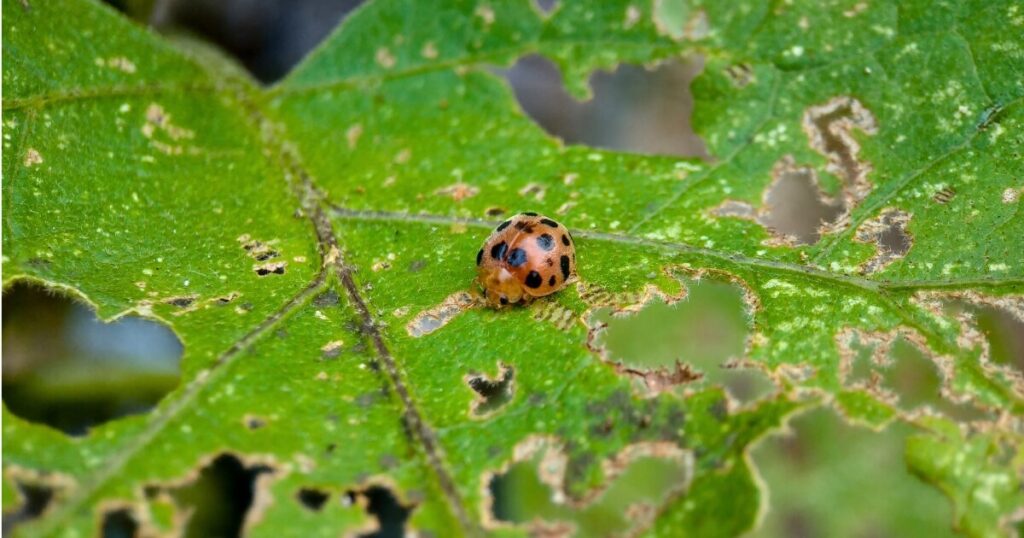
Early detection and proactive management are the best ways to control garden pests, weeds, and diseases. Because once any one of those gets out of control, it can be a nightmare to get things back to normal.
- Identifying Common Pests and Diseases: Learn to recognize signs of common problems. For instance, chewed leaves indicate insect pests, while discolored or spotted leaves might suggest a disease.
- Control Methods: Start with natural methods like handpicking pests, using barriers, or introducing beneficial insects. If these aren’t effective, you might consider food-friendly chemical controls. But I always use them as a last resort. And remember to follow the product instructions carefully, or you’ll end up with an even bigger problem.
Harvesting Your Vegetables
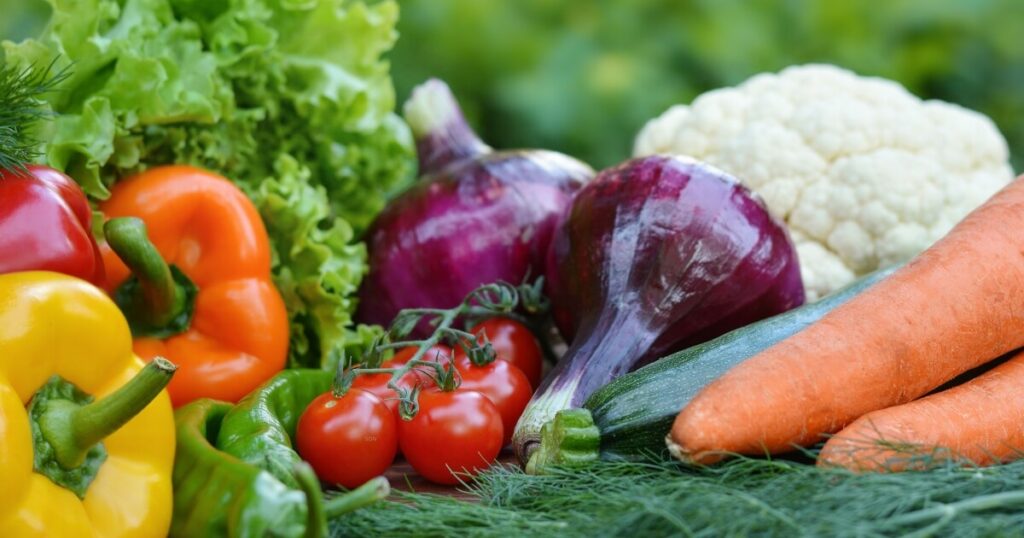
Harvesting is my favorite and most rewarding part of gardening:
- Knowing When to Harvest: Each vegetable has its own signs of readiness. For example, tomatoes are ready when they’re uniformly colored and slightly soft, while beans should be firm and snap easily. Keep a planting calendar to help guide you and make lots of notes for next season.
- Harvesting Techniques: Use the right technique for each vegetable. Some need to be cut, while others need to be gently twisted off to avoid damaging the plant and keep producing for the rest of the growing season.
- Storing and Preserving: Most vegetables are best used fresh, but many can be stored or preserved. Root vegetables such as carrots and potatoes can be stored in cool, dark places. Others, like tomatoes, can be canned or frozen for later use. You should have a plan of what you will do with your vegetables before you start the harvest.
Growing Forward: Your Gardening Path
Wrapping up, gardening is a lot like making a new friend – it takes time, patience, and a bit of trial and error, but the rewards are well worth it.
You’re a beginner, so don’t worry if things aren’t perfect from the get-go. Gardening is a learning experience, and every plant you grow will teach you something new.
In my experience, sometimes you can do everything right and still end up with plants that didn’t take off or veggies that turned out too small. It happens to even the greenest of green thumbs.
Whenever you have a question or are unsure about something, don’t forget that I’m here to help and have plenty of guides to steer you in the right direction. So, grab your tools, and let’s turn that patch of dirt into a garden you can be proud of.





